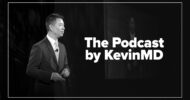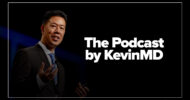This article is sponsored by Sandoz, a Novartis division, and global leader in generic pharmaceuticals and biosimilars.
When I started working in the health care industry over 25 years ago, I was compelled by a passion to make a difference and improve the lives of those around me. Ultimately, that mission brought me to Sandoz, where I’ve had the privilege to develop and drive strategies to get critical medicines into the hands of those who need them – at a more affordable price. Through this work, I’ve seen firsthand how certain medicines can be cost-prohibitive, particularly for people living with a chronic illness who may have previously had to either forgo treatment or settle for less-effective therapies. This is especially relevant in the U.S., given rising health care costs and challenges in accessing care.
Fortunately, there is momentum across the health care ecosystem to address these challenges and transform the future of care for patients. In the treatment landscape, one viable solution is biosimilars.
Biosimilars, or biological products that are highly similar to and have no clinically meaningful differences from an existing FDA-approved reference product, can help address the growing health care challenges we face in the U.S.
Many patients who need biologic medicines have chronic conditions that require lifelong treatment to help manage their symptoms. This often causes great financial burden, forcing some patients to skip or delay doses and necessary care. With biosimilars, patients and their care teams don’t have to choose between efficacy and safety or savings, meaning greater access to critical care.
The financial impact of biosimilars on the broader health care system is also significant. Since 2015, biosimilar medicines have saved U.S. patients and health systems more than $13 billion. These savings can deliver lower out-of-pocket costs for patients, drive competition that helps make more room for new and innovative medicines and increase sustainability for an overburdened U.S. health care system.
Unlocking the potential of biosimilars in the U.S.
When I joined Sandoz in 2010, the U.S. Congress had only just enacted the Biologics Price Competition and Innovation Act (BPCIA), which provided a regulatory pathway to biosimilars in the U.S. The BPCIA opened the door for manufacturers like Sandoz to bring more-affordable biologic medicines to U.S. patients, and five years later, we did just that. In 2015, Sandoz launched the first FDA-approved biosimilar, transforming the biologics market landscape and the way we think about patient access and care.
Nearly eight years later, 40 biosimilars are now approved and 25 have been launched in the U.S., resulting in 150 million more days of additional patient therapy than would have been possible otherwise. While this is comparatively low compared to the 86 biosimilars approved in Europe since 2006, it’s clear that the U.S. is making strides to provide patients with more-affordable treatment alternatives.
Oncology biosimilars are a prime example of the potential of these medicines. The use of new biosimilars has saved U.S. patients with cancer more than $3.5 billion since their introduction in 2015. They’ve also cut the growth rate in oncology spending by nearly half, and this is projected to continue to decline over the next four years.
Another 120 reference biologics are set to lose exclusivity over the next decade, allowing new biosimilars to launch and expand patient access to biologics – especially in critical disease areas such as neurology and rheumatology, where biosimilars are not yet available. This will have a significant impact for U.S. patients who otherwise may not have had access to critical biologic treatments. In fact, some estimates predict that as a result of increasing biosimilar availability, an additional 1.2 million U.S. patients could gain access to the life-changing biologic medicines they need by 2025.
This is particularly exciting, not only because of the potential to lower the costs of biologic medicines and make care more accessible to patients, but also because biosimilars can help make way for the next generation of medicines by spurring new innovations and scientific breakthroughs.
Fueling future innovation
Without competition, innovation wouldn’t be possible. Biosimilars propel innovation by creating competition in markets that have been unchallenged for more than a decade. As more biosimilars become available, many markets will experience unprecedented competition, driving companies to create more choices for patients and physicians. Savings driven by increased competition can also be reallocated to meet the challenges of caring for a growing aging population.
This year will be a true test of this, as key biologic medicines are coming off-patent and several biosimilars are slated to launch in new markets. In the short term, patients in critical disease areas such as gastroenterology, rheumatology, dermatology, and neurology will have more treatment options while health care companies will explore further drug development and discovery to address rising competition.
Looking ahead
As the availability and use of biosimilars increase, there will be new challenges on the horizon that demand attention, including this year’s launch of new pharmacy benefit biosimilars and ongoing barriers to adoption, such as biosimilar misinformation. Additionally, incentives such as pharmacy benefit managers’ rebate preferences continue to present obstacles that hinder patients’ access to lower-cost medicines, which will take bipartisan support and collaboration among health care stakeholders to address.
Despite these hurdles, biosimilars continue to prove their value for patients and health systems alike. Just as the generics market has transformed care for patients, biosimilars can do the same if widely adopted. The sooner physicians, patients, and payers realize this potential, the sooner we can change the long-term trajectory of U.S. health care.
Timothy de Gavre is vice president and chief commercial officer, Sandoz US.
Note: This interview was recorded in December 2022.
VISIT SPONSOR → https://Sandoz.com
SUBSCRIBE TO THE PODCAST → https://kevinmd.com/podcast
RATE AND REVIEW → https://kevinmd.com/rate
FOLLOW ON INSTAGRAM → https://www.instagram.com/kevinphomd
FOLLOW ON TIKTOK → https://www.tiktok.com/@kevinphomd


























